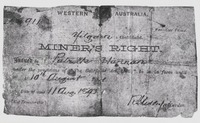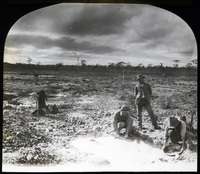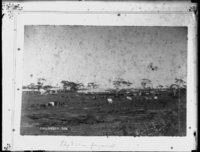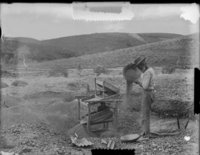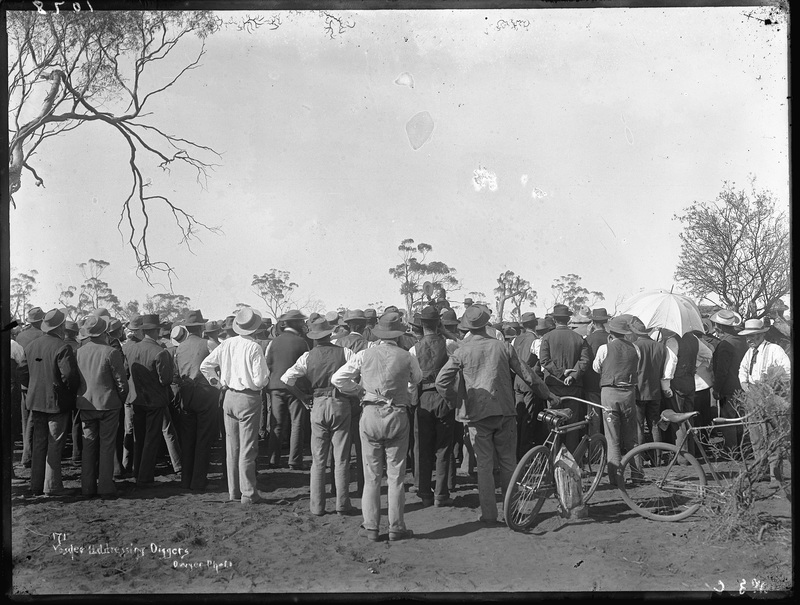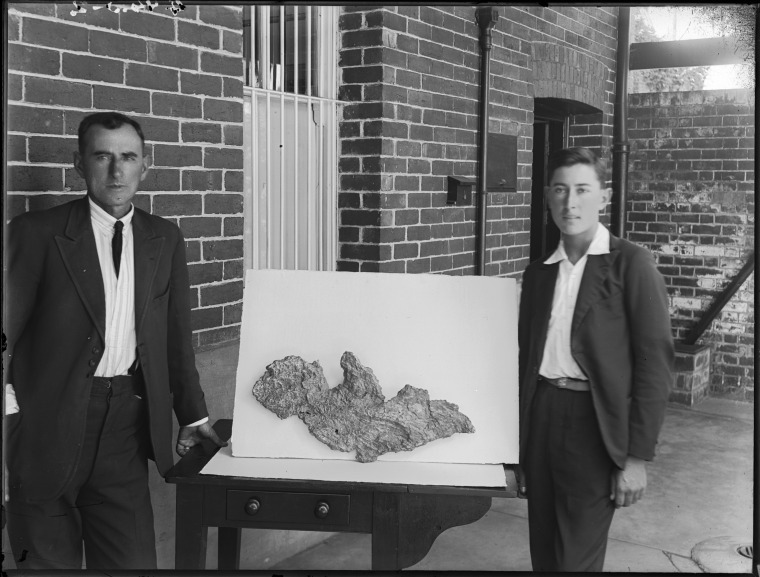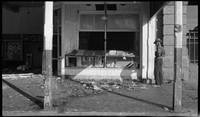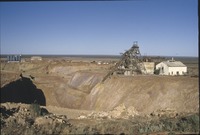Gold
The first major discovery of gold in Western Australia in the 1890s initiated a period of growth and transformation for the struggling colonial state.
Fortune-seeking prospectors helped establish a significant gold mining industry by 1900. Over a hundred years later, the Western Australian goldfields still produce most of Australia's gold.
In 1900 many large gold mines in Western Australia were controlled by British shareholders who grew wealthy from their investments. From 1895 to 1915 these mines produced gold worth £66 million, roughly 56% of all Western Australian output.
Gold was mined on a large scale and underground mining became more complex as shafts were sunk to deeper levels until around 1910, when metallurgical problems precipitated a down turn in the industry. Improvements in mining machinery and gold extraction techniques revived the industry for a while, but increased labour and processing costs resulted in many mines closing. By 1925, Sons of Gwalia was the only big gold mine operating outside Kalgoorlie's Golden Mile.
In the early 1930s some mines, such as the Lake View and Star mines in Kalgoorlie, amalgamated to increase efficiencies. The move from steam power to oil-generated electricity and a new flotation method of treating gold ore also aided a revival in the industry. Mines reopened in outback areas due to an injection of capital from new companies like Western Mining Corporation.
During World War II the gold mining industry experienced another big downturn, from 731 mines in 1940 to 324 in 1943. By 1945 employment in the mining industry was at a third of its pre-war rate.
Innovations in gold extraction during the 1950s and 1960s, such as portable one-man drills, tungsten carbide-tipped bits and electric locomotives, helped maintain production levels despite a shrinking work force. Despite this, the profitability of Kalgoorlie's gold mines declined, and production from areas outside the Golden Mile decreased.
The industry did not recover until the 1980s. Mines that were previously unprofitable due to low grade ore, reopened with increased gold prices.
Open cut mining was introduced to old areas of gold production such as Kalgoorlie's Golden Mile and Leonora's Sons of Gwalia mine. The buoyant gold price made very fine grained gold, extracted from low grade ore, highly profitable.
In 2015-16, gold was Western Australia’s second most valuable mineral sector, earning $10 billion (12% of the mineral sector’s total sales). Western Australia is still the largest producer of gold in Australia with more than 70% of the nation’s overall gold production.
Western Australia is believed to have the largest gold reserves in the world: 16% (9,100 tonnes) of the world estimated gold reserves of 56,000 tonnes.

